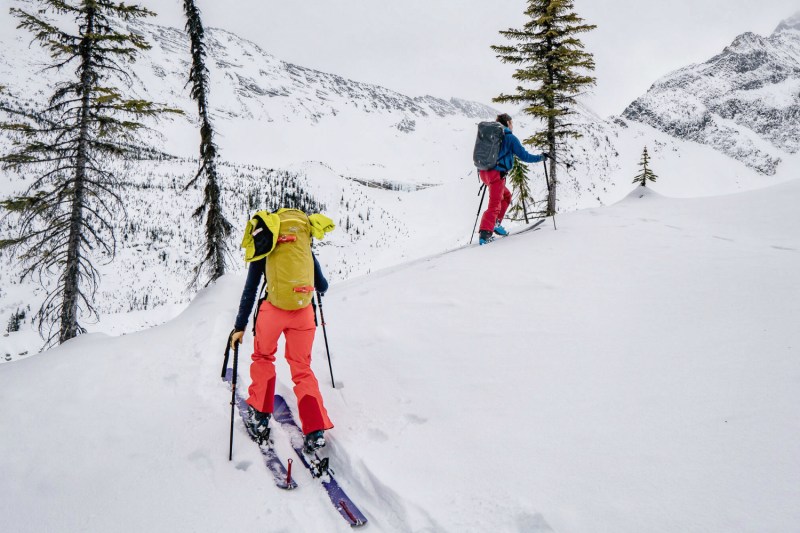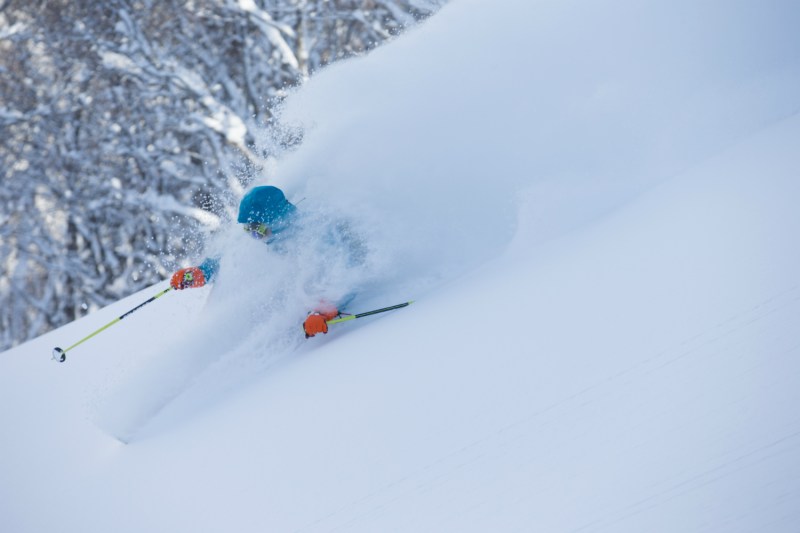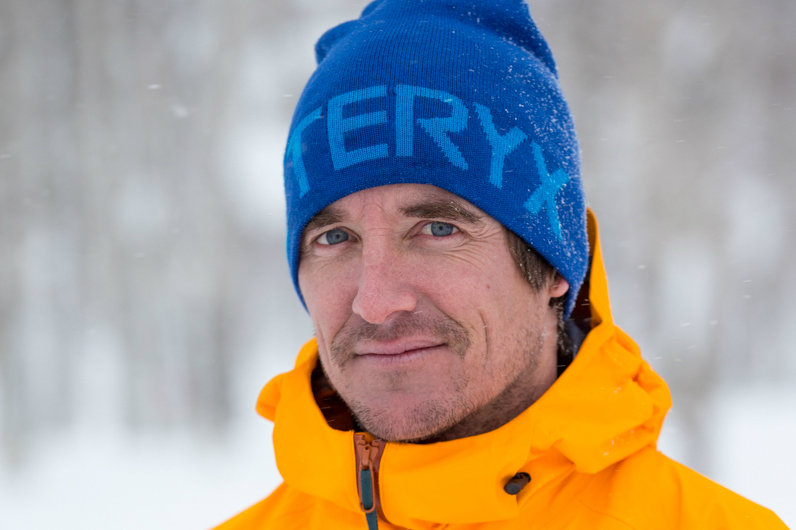Greg Hill is a ski guide known for pushing the limits of endurance in mountains across North America.
He’s held multiple achievements including a world record for skiing more than two million vertical feet in a single year, skiing 62 vertical miles in a month, and first descents in Norway, Chile, Pakistan, and Canada. We had the opportunity to speak with the renowned skier and picked his brain on a variety of topics. From learning more about how he uses modern tech to help his mountain guiding business in the form of the 57Hours app, to hearing the story of how he managed to ski two million feet, and even what drove him to make the switch from a standard automobile to an EV.
Related Guides
Backcountry Ski Guiding
Guiding clients backcountry skiing is one of Hill’s main sources of income. It’s how he started making the mountains his job and still loves it.

“The majority of my winters are spent on my professional career, my pro skier career versus the guiding, but I probably do 30 days a winter,” Hill tells The Manual. “It’s definitely something I love doing, one; and it’s my source of income for the rest of my life really, so I like to keep honed. So that 30 days is a great way to keep doing it and keep making sure I’m progressing and becoming a better guide.”
57Hours
57Hours is a phone app that connects skiers and climbers with certified mountain guides all over North America and, increasingly, the rest of the world. Simply pick an adventure you’re interested in and they’ll take care of hand-picking the best guide so you can have an unforgettable experience, but only after they’ve gone through a vetting process.
“You need to be accredited, especially to guide people so having [57Hours] do that legwork ensures that clients that are searching through 57Hours are getting qualified certified guides, which will make their experience better,” Hill says.
Hill’s biggest tip for making the best trip with a guide? Let the guide do the work. “At first I didn’t see the benefits of using I guide. Now, I can see the benefits of having the right guide and them planning it for you because that’s their area of experience. That makes it a worry-free, amazing trip instead of muddling around for a couple of days. If you’ve got five days and you muddle around for two figuring things out, then maybe you get three good days. But you hire a guide, that dream of yours can be exactly like you dreamt it to be.”
Skiing Two Million Feet
Big goals like skiing two million feet or summiting 100 mountains in a tiny car requires persistence over years and years, which Hill knows well.

“They were very long-term [goals]. 1999 is when I dreamt of two million. Y2K would be neat to do two million. To get there I had to be able to do one million in a season, so I finally did a million in a long season. But the average per day wasn’t quite good enough for two million. So then I spent some time doing 10,000 foot days to hone my daily skills and maximums. So then I could get to two million feet. And then I ended up doing 50,000 in a week. And then finally all that training for 10 years worked towards the two million feet.”
A couple of years later he decided he needed another challenge and aimed for 100 kilometers (62 miles) of vertical skiing in one month.
“And then after the two million feet, that will take a few years to recover, mentally and emotionally. Then the March Madness, the 100k, that was just another ‘Let’s see if we still got it.’ What could I do for one month of non-stop?“
Gore-Tex Vs. Softshell Jackets
Softshell fabrics in jackets and pants were basically created for ski touring and breathable adventures in the mountains, but Hill’s favorite gear has changed over time.

“For years I was a softshell guy, but when the weather turned, then you were never quite prepared for it. You were if you carried your pants in your backpack. A nice gore-tex pant with a decent stride with some thigh zips that open wide are more of a one-piece that does it all.” Hill says.
Obviously, skis are important tools for the snow but you need the right tool for the conditions.
“I’m a powder skier so I’m usually on a powder ski like the Salomon QST 118 Shift MTN pin bindings
Electric Adventures
Spending more and more time and fuel driving to trailheads and flying to ski destinations, Hill started to worry about his carbon footprint.
“It was growing for years when I watch myself drive my F-350 up to Rogers Pass for a day of solo touring and enjoying nature. The hypocrisy of that action took a long time to settle in.” Hill says. Instead of driving a gas-guzzler, he tried to go the other end of the eco-extreme.

“In 2012 I biked to all my summits for a month, but people would drive by in their trucks. No one would really join me, it was just too hard. Now the adoption of the electric vehicle is really easy; it’s really easy. It’s just a vehicle. It’s the same amount of energy, it’s not like I’ve gotta bike 40k to do this. It’s not what you’re going to do normally but a little more sustainable.” And then the timing was right when Chevrolet came out with the fully-electric Bolt.
“Once the Chevrolet came out, I thought ‘well this thing has range.’ I can prove that a life of adventure is possible. Climb 100 summits. If I can do 100 summits, the average person can have an adventurous life without sacrificing too much.“
You can find Greg Hill in the mountains around Revelstoke, British Columbia, and on Instagram.


